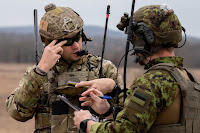Houston, TX - In a recent development, a 23-year-old U.S. citizen from Houston has been sentenced to federal prison for attempting to provide material support to the Islamic State of Iraq and al-Sham (ISIS), a designated foreign terrorist organization. The announcement was made by U.S. Attorney Alamdar S. Hamdani and Assistant Attorney General for National Security Matthew G. Olsen.
Kaan Sercan Damlarkaya was found guilty of attempting to join and support ISIS from August 2017 until his arrest in December 2017. He pleaded guilty on July 8, 2019.
U.S. District Judge Andrew S. Hanen has ordered Damlarkaya to serve 165 months in federal prison, followed by a lifetime of supervised release.
According to Hamdani, "Damlarkaya wanted to kill in the name of ISIS. He slept with a machete by his bed, ready to use on law enforcement, provided instructions on how to make a bomb to ISIS supporters, and prepared to travel overseas and become a martyr for our enemies. Today's sentence ensures that Damlarkaya will spend many years away from machetes and explosives, making everyone in the Southern District of Texas a lot safer."
In addition to his desire to join ISIS, Damlarkaya also shared information with ISIS supporters on the use of machetes, homemade construction of automatic weapons, and the manufacturing and usage of explosive materials.
James Smith, Special Agent in Charge of the FBI Houston Field Office, stated, "Preventing a terrorist attack remains the FBI's number one priority, but the threat of terrorism has morphed significantly from the sophisticated, externally directed plot to the individual, inspired attack. Fortunately, Damlarkaya was stopped before he was able to carry out his terrorism plan. Our Joint Terrorism Task Force will continue to gather and share information 24 hours a day, seven days a week, 365 days a year to protect our communities."
Damlarkaya had engaged in numerous online conversations with individuals he believed to be fellow ISIS supporters, expressing his intentions to travel overseas to fight for ISIS in Syria or Afghanistan. He also discussed conducting attacks on non-Muslims in the United States if he failed to join the group overseas.
He provided information on bomb-making techniques, specifically describing the process of making explosives using triacetone triperoxide, while emphasizing the importance of safety precautions. Additionally, Damlarkaya shared instructions on constructing automatic weapons, stating that a $15 machete could serve as an affordable alternative for those who couldn't obtain firearms or explosives.
Upon Damlarkaya's arrest, law enforcement officers executed a search warrant at his residence and discovered a machete next to his bed.
Damlarkaya will remain in custody until his transfer to a U.S. Bureau of Prisons facility, which will be determined in the near future.
The investigation was conducted by the FBI's Joint Terrorism Task Force, with Assistant U.S. Attorney Rob Jones leading the prosecution, assisted by DOJ Trial Attorneys Kevin Nunnally and Gregory Gonzalez from the National Security Division's Counterterrorism Section.

















